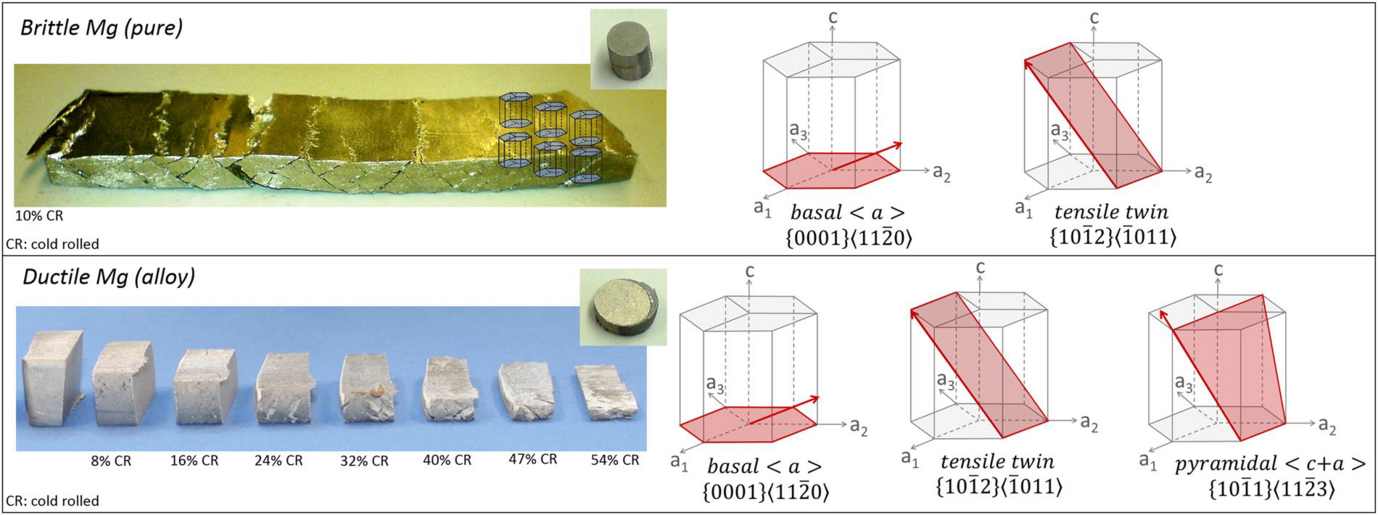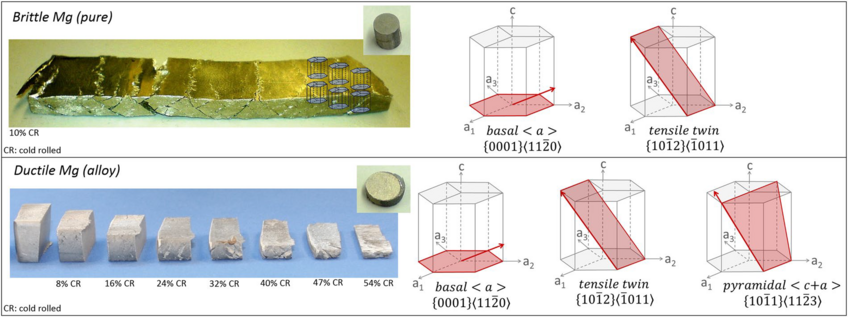Rare-earth free magnesium alloy with improved intrinsic ductility
Metallic alloys are the backbone of manufacturing owing to their strength and formability since more than 5000 years. Compared to polymers they have high mass density.
There is, however, one main exception that is accessible to commercial use: magnesium. It has a mass density of only 1.7 g/cm3, making it the lightest structural material, actually 4.5 times lighter than steels, still 1.7 times lighter than aluminum, and even slightly lighter than carbon fibers. Yet, the widespread use of magnesium is hampered by its intrinsic brittleness. While other metallic alloys have multiple dislocation slip systems, enabling their well-known ductility, the hexagonal lattice of magnesium offers insufficient modes of deformation, rendering it intrinsically brittle. We have developed a quantum-mechanically derived treasure map which screens solid solution combinations with electronic bonding, structure and volume descriptors for similarity to the ductile magnesium-rare earth alloys. Using this insight we synthesized a surprisingly simple, compositionally lean, low-cost and industry-compatible new alloy which is over 4 times more ductile and 40% stronger than pure magnesium. The alloy contains 1 wt.% aluminum and 0.1 wt.% calcium, two inexpensive elements which are compatible with downstream recycling constraints.

Fig: Pure polycrystalline magnesium failing in a brittle manner already at low deformations, shown here in the rolled state.
Pure Mg fractured along macroscopic shear bands when cold rolled to 10% thickness reduction whereas Mg-1Al-0.1Ca could be cold rolled to 54% thickness reduction in several rolling passes of 8% thickness reduction per rolling pass; small sheet sections cut from the rolled sheet after each consecutive rolling pass are presented. Early failure of pure Mg occurs due to the restriction to mainly basal <a> dislocation slip and tensile twinning. Additional activation of pyramidal <c + a> dislocation slip enables improved room temperature formability specimens of the new Mg-Al-Ca alloy before and after deformation.
